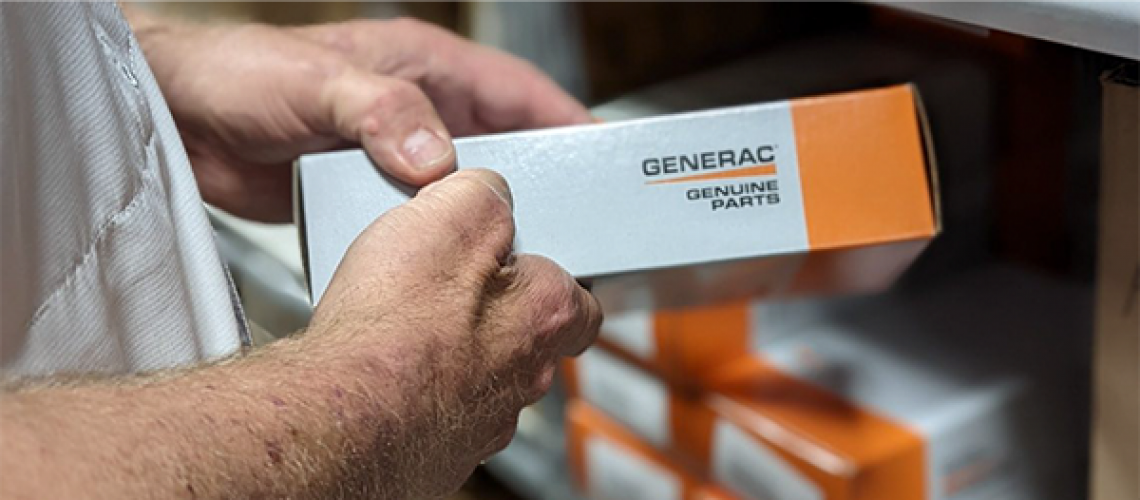Here in the US, power outages are unfortunately a commonplace occurrence. They can be caused by all sorts of issues from grid failure to storms and floods. Indeed, it is this situation that is the reason why so many US households choose to have a standby or whole-home generator to provide their families with power in case of a blackout.
Although, just like any other piece of complex and vital equipment whole-home generators must be regularly maintained to ensure they work safely and be relied upon when needed. Fortunately, you can read all about the most important things to look out for when maintaining your standby generator, in the post below.
Watch out for frequent starting issues
A generator with a faulty starter can be problematic in two critical ways. First of all, not being able to get your generator up and running easily in the middle of an emergency is only going to add to your stress!
Secondly, a faulty starter can be a sign that your generator is on its way out. However, this is not always the case, and that is why regular inspections are so important. Indeed, by inspecting your generator you may find that all it needs is a little maintenance and repair to the starter and things will be as good as new. Other issues that can cause issues with starting that can be revealed by an inspection include a lack of fuel or the need for more oil too, both of which can be sorted with proper maintenance.
Watch out for patchy performance
You should also be on the lookout for patchy performance from your generator when inspecting it. This is most easy to see in appliances that use a larger amount of energy such as freezers and air conditioning.
Indeed, if you notice these appliances cutting out while the generator is running, it could signify a larger issue that needs your attention. It’s also worth noting that an unstable power supply can damage many appliances, so it’s always worth getting this resolved.
Check the levels of carbon monoxide it’s emitting
Whole-home generators always need positioning outside of the home. The reason for this is every generator will give off some levels of carbon monoxide which is a poisonous gas with no odor. Indeed, a generator should never be run inside of a closed space like a garage, because of this risk.
However, even when running your generator outside, it’s a smart idea to regularly inspect its carbon monoxide levels. This is for two reasons. The first is for the safety of those in proximity to the generator including people, and wildlife. The second is that when a generator emits a high level of carbon monoxide it is a sign that something serious is wrong and it requires immediate service.
Check your generators fuel usage
Another important factor to check when inspecting your generator is its fuel consumption. If you find yourself filling it up more than usual this can be a sign that something is wrong.
Fuel, as you know, is not free, and a faulty or aging generator may be using up an excessive amount which can increase your running costs.
The reason for this is that as the components inside experience wear and tear they will lose efficiency, which ultimately results in higher fuel costs. Therefore if you want to minimize the cost of running your generator, checking its fuel consumption is an important aspect of any inspection.
Check whether your generator is big enough for your needs?
When it comes to inspecting your generator, you must check it is the right capacity for your current needs. Sadly, too many people forget to upgrade the size of their generator when their energy capacity grows, and this can lead to performance issues that can compromise the comfort and safety of their families.
Common reasons for increasing the capacity of your generator may include living in a larger property, needing to run more appliances in an emergency, and even having more people live in a property. For example, if more children are born, or a family has their parents come live with them.
With that in mind, during your generator inspection, be sure to check that you have enough capacity for all the appliances you wish to use if the power goes out.
Watch out for frequent breakdowns
The whole point of a standby generator is that it’s there when you need it. Of course, if it can’t be relied upon because of frequent breakdowns this is going to cause you major problems. The good news is that regular maintenance and even the occasional repair can prevent frequent breakdowns.
Check your manual for lifespan guidance
Also when inspecting your generator, it’s a good idea to check your manual or online for its expected lifespan. By being aware of this you will be in a much better position to know what to expect from your generator.
Of course, your generator’s life expectancy will depend on it being regularly maintained. Just another reason to make time to change the oil and complete other crucial maintenance tasks.
Make inspecting and maintaining your generator easy
As you can see, regularly inspecting and keeping your generator well maintained is crucial both to ensure longevity and safety. You will also have seen that there is a whole range of issues that you will need to look out for as a generator owner, something that can be time-consuming and in some cases such as carbon monoxide emissions, complicated.
The good news is that you don’t have to deal with or be responsible for this issue if you join our GenMonitor Maintenance Program.
GenMonitor is our online management and global monitoring system that allows us to track the health of your generator remotely, 24/7. It gives us real status reports and alerts us to any potential issues so we can get to you fast and deal with any issues before they become major problems.
Also, by subscribing to our generator maintenance program you can be sure that your machine gets a comprehensive 40-point inspection every year. We’ll even give you priority placement on maintenance service calls, so in the event, anything does go wrong you will be safe in the knowledge that it won’t stay that way for long!
Subscribe to our GenMonitor Maintenance Program!



